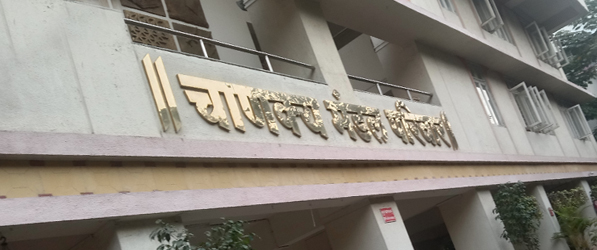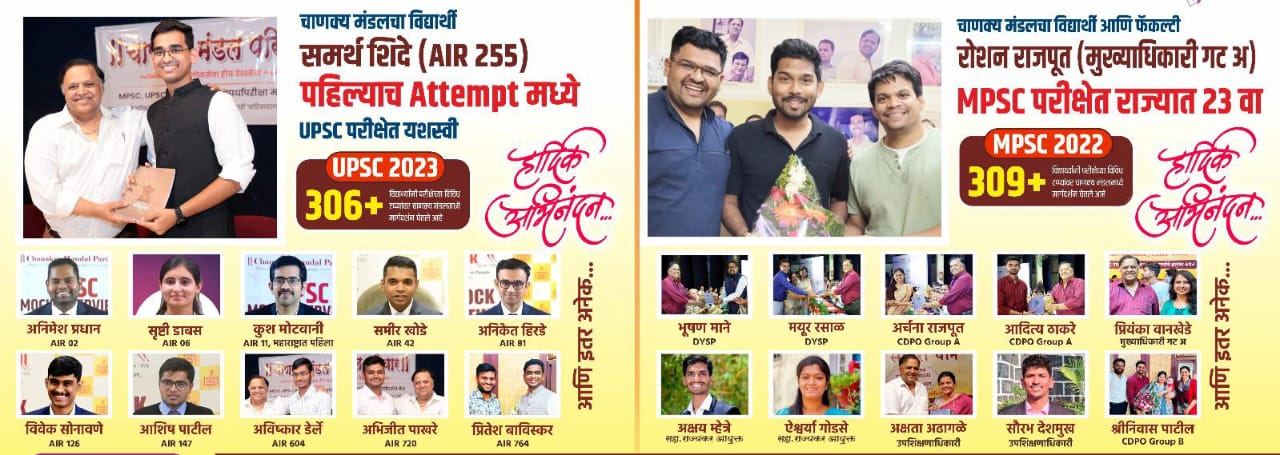Why “Chanakya”?
Arya Chanakya: Perhaps the pioneering prime bureaucrat- scholar. The thinker who realized the dangers of foreign invasion. Chanakya Mandal Pariwar has tried to awaken a corrupt exploitative, anti-people and inefficient regime. When the power-drunk corrupt regime refused to wake up, he sacrificed his career, went into wilderness organized and inspired the young generation from the commonest of the common strata of society.
He affected the political revolution which unified India and repulsed the foreign invasion. Having achieved all this he renounced all positions of power and wrote the eternal treatise ‘Artha Shastra’.
PSIR - II Paper
खण्ड ‘A’ / Section A
1.
निम्नलिखित मे से प्रत्येक का लगभग 150 शब्दों में लिखिए :
Write on the following in about 150 words each :
(a) राजनीति विज्ञान के अध्ययन में तुलनात्मक प्रणाली की मुख्य सीमाओं का विवेचन किजिए।
Discuss the main limitations of the comparative method to the study of Political Science.
10
(b) वैश्वीकरण के दौर में विकासशील राष्ट्रों को किस तरही की मुख्य चुनौतिओं का सामना करना पड रहा है ?
What are the main challenges faced by the developing countries in the era of globalization ?
10
(c) अंतर्राष्ट्रीय राजनीति के अध्ययन में मार्क्सवादी एवं यथार्थवादी दृष्टीकोणों के बीच की समानताओं का विवेचन किजिये।
Discuss the commonalities between the Marxist and Realist approach to the study of International Politics.
10
(d) विश्व की द्विध्रुवी संरचना बहुध्रुवी की अपेक्षा ज्यादा स्थिर होती है। टिप्पणी करें।
Bipolar structure of the world is more stable than the multipolar one. Comment.
10
(e) विश्व की द्विध्रुवी संरचना बहुध्रुवी की अपेक्षा ज्यादा स्थिर होती है। टिप्पणी करें।
Bipolar structure of the world is more stable than the multipolar one. Comment.
10
50
2.
(a) चुनावी लोकतंत्र ने किस प्रकार से लोगों की भागीदारी को प्रजातांत्रिक प्रक्रिया में संवर्धित किया है ?
How has the electoral democracy augmented the participation of people in the democratic process ?
(b) विकासशील समाजों में लोकतांत्रिक प्रक्रिया को मजबूती प्रदान करने में सामाजिक आंदालनों की भूमिका का विवेचन किजिये।
Discuss the role of social movements in stengtheningthe democratic processes in developing societies.
15
(c) अन्तर्राष्ट्रीय न्यायालय की संरचना का वर्णन किजिये। इसके स्वैच्छिक क्षेत्राधिकार का विवेचन किजिये।
Describe the composition of the International Court of Justice (ICJ). Discuss its voluntary jurisdiction.
15
50
3.
(a) जनवादी चीन गणराज्य (पी आर सी) का एक महान शक्ति के रूप में उदय तथा एशियाई राजनैतिक व्यवस्. पर इसके निहितार्थों का आलोचनात्मक विवेचन किजिये।
Critically examine the rise of People’s Republic of China (PRC) as a great power and its implications on Asian Political order.
(b) सामूहिक सुरक्षा के वैचारिक आयामों की विवेचना किजिये।
Discuss the conceptual dimensions of collective security.
(c) अन्तर्राष्ट्रीय आतंकवाद का सामना करने हेतु वैश्विक अभिसमयों की प्रभावोत्पादकता की विवेचना किजिये।
Discuss the efficacy of global conventions to combat international terrorism.
15
50
4.
(a) विकासशील एवं विकसित देशों के बीच डब्लू टी ओ में मत्स्य पालन वार्ता में उत्पन्न गतिरोध के कारणों की पहचान एवं मूल्यांकन करें।
Identify and evaluate the reasons for deadlock in the WTO negotiations on fisheries between the developing and developed countries.
(b) अराजक विश्व में देशों को अपनी उत्तरजीविका सुनिश्चित करने हेतु यथार्थवादी उपाय क्या है ?
What is the realist prescription to the States to ensure their survival in an anarchical world ?
15
(c) रूसी–युक्रेन संकट ने युरोपिय संघ (ई यू) के सदस्य देशों की ऊर्जा जरूरतों पर एक काली परछाई डाल दी है। टिप्पणी करे।
Russian-Ukraine crisis has cast a dark shadow on the energy needs of the member states of the European Union (EU). Comment.
15
50
खण्ड ‘B’ / Section B
5.
निम्नलिखित मे से प्रत्येक का लगभग 150 शब्दों में लिखिए : Write on the following in about 150 words each :
(a) शांतिपूर्ण सह अस्तित्व भारत के विदेश नीति की आधारशिला है। टिप्पणी करें।
Peaceful co-existence remains the cornerstone of India’s foreign policy. Comment.
10
(b) दक्षिण ऐशिया के सदस्य देशों के बीच गहन आर्थिक सहयोग को बढाने हेतु उपायों एवं साधनों का विवेचन किजिये।
Discuss the ways and means to realize greater economic co-operation among the Member States of South Asia.
10
(c) भारत एवं बांग्लादेश के बीच ‘जल–सहयोग’ बढाने हेतु आवश्यक कदमों की विवेचना किजिये।
Discuss the steps required to realize ‘hydro-co-operation’ between India and Bangladesh.
10
(d) भारत–अमेरिका के सामरिक संबंधों के लिए बुनियादी विनिमय एवं सहयोग समझौते (बी ई सी ए) के महत्त्व की व्याख्या करें।
Explain the significance of Basic Exchange and Co-operation Agreement (BECA) for Indo-US strategic relations.
10
(e) भारत की वैश्विक प्रतिष्ठा में वृद्धी हेतु सार्वजनिक कूटनिती की भूमिका का विवेचन किजिये।
Discuss the role of public diplomacy in the enhancement of India’s global standing.
10
50
6.
(a) वैश्वीकरण के वर्तमान युग में नवीन अन्तर्राष्ट्रीय आर्थिक व्यवस्था (एन आई ई ओ) हेतु मोंग की प्रासंगिकता का विवेचन किजिये।
Discuss the relevance of the demand for New International Economic Order (NIEO) in the present era of globalization.
(b) शीत युद्ध के बाद भारत की विदेश नीति के प्रक्षेप पथ में परिवर्तन के लिए उत्तरदायी प्रमुख कारकों का समालोचनात्मक परीक्षण किजिए।
Critically examine the major factors responsible for a turnaround in the trajectory of India’s foreign policy in the post-cold war period.
15
(c) भारत के परमाणु अप्रसार संधि (एन.पी.टी.) पर दस्तखत से इनकार करने के कारणों की चर्चा करें।
Discuss the reasons behind India’s refusal to sign the nuclear non-proliferation treaty (NPT).
15
50
7.
(a) भारत-जापान के सामारिक एवं वैश्विक भागीदारी के मुख्य प्रेरक क्या है ?
What are the main drivers of India-Japan Strategic and Global
Partnership ?
(b) भारत की उत्तर-पूर्व क्षेत्र पर ‘लुक-ईस्ट’ नीति के क्या निहितार्थ हैं ?
What are the implications of ‘Look-East’ policy on the north-eastern region of India ?
15
(c) भारत के संयुक्त राष्ट्र सुरक्षा परिषद में स्थायी सदस्यता के दावे को न्यायोचित ठहराने वाले कारकों की व्याख्या करें।
Explain the factors which justify India’s claim for a permanent seat at the UN security council.
15
50
8.
(a) भारत-इजरायल का द्विपक्षीय संबंध किस प्रकार से भारत की विदेश नीति रूचियों की स्वायत्तता को परिलक्षित करता है ?
How does India-Israel bilateral ties reflect the autonomy of India’s foreign policy choices ?
(b) भारत के उत्तर पूर्व क्षेत्र में गैरकानूनी सीमा पार प्रवसन के परिणामों का विवेचन किजिये।
Discuss the consequences of illegal cross-border migration in India’s north-eastern region.
15
(c) इक्कीसवी शताब्दी में नवीन विश्व-व्यवस्था के बारे में भारत के दृष्टीकोण की विवेचना किजिये।
Discuss India’s vision of a New World order in the 21st Century.
15
50
 CTS
CTS  Donate
Donate 


